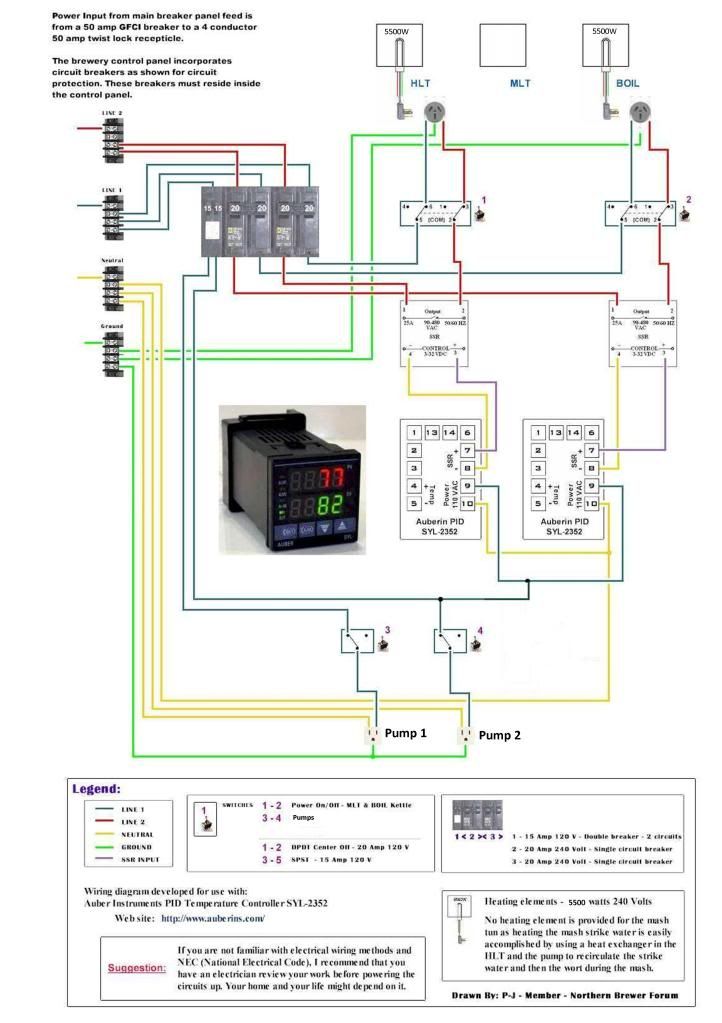Update 9.12.10: Build starts on page 20.
Update: Actual build is as follows: use HERMS setup in converted keg MLT and HLT. 5500W ULD element in HLT, and 4500W ULD element in BK. Will still do decoction mashing with propane burner outside. See wiring diagram below for control panel function.
This is what the finished rig looks like:
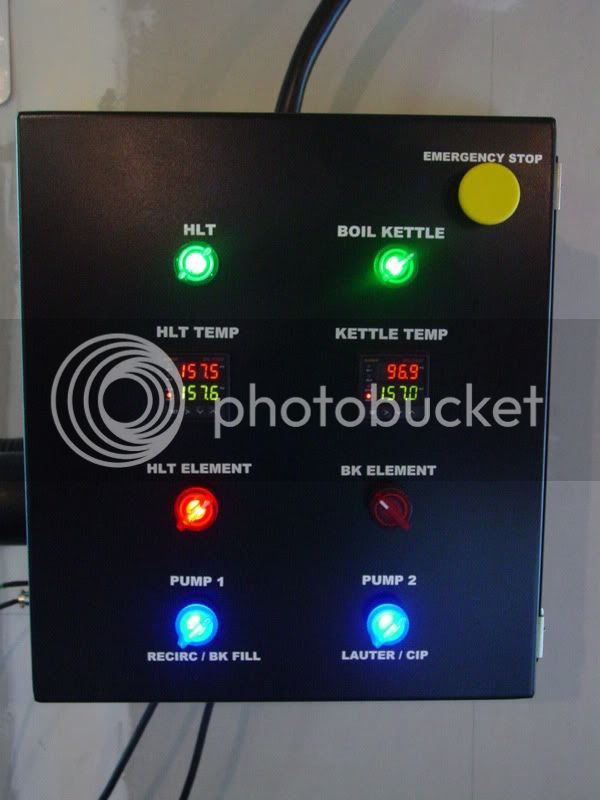
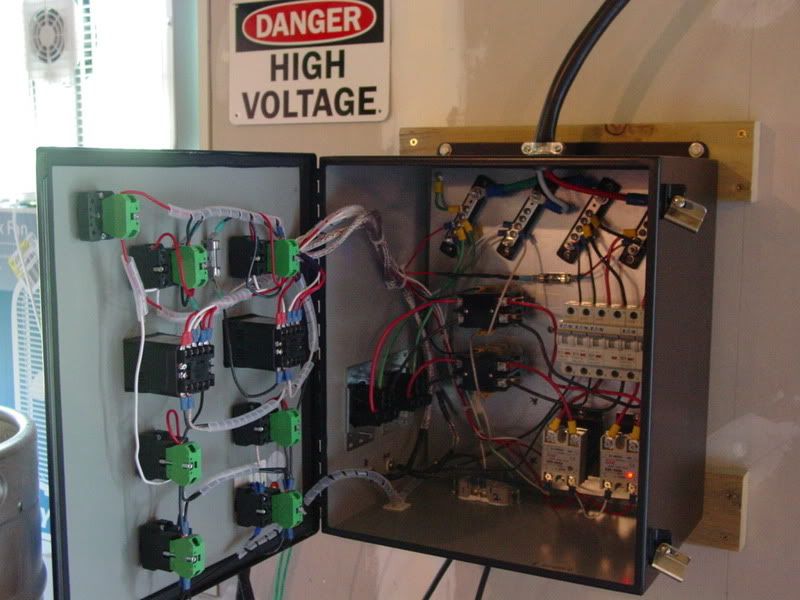
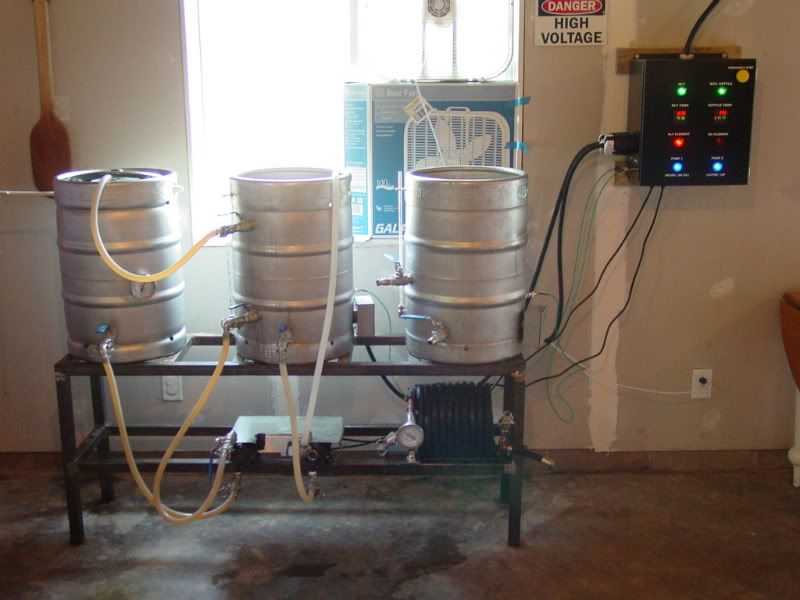
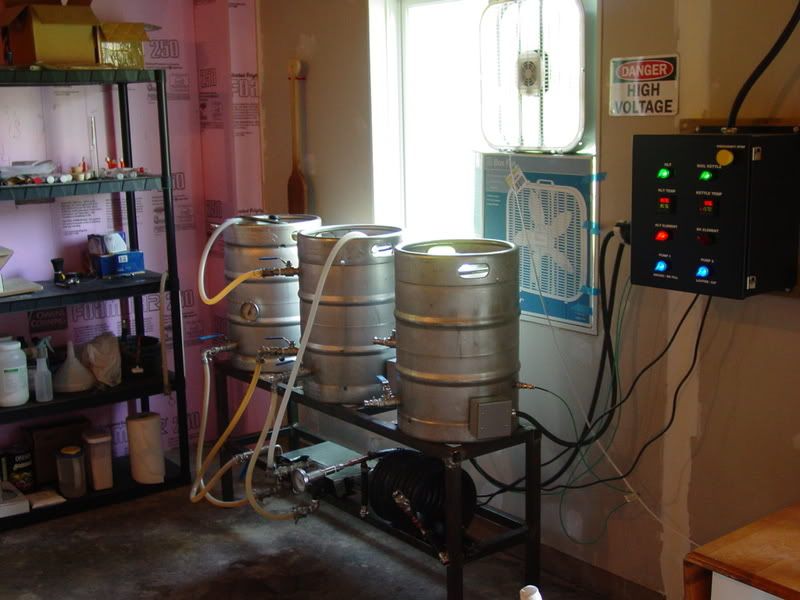
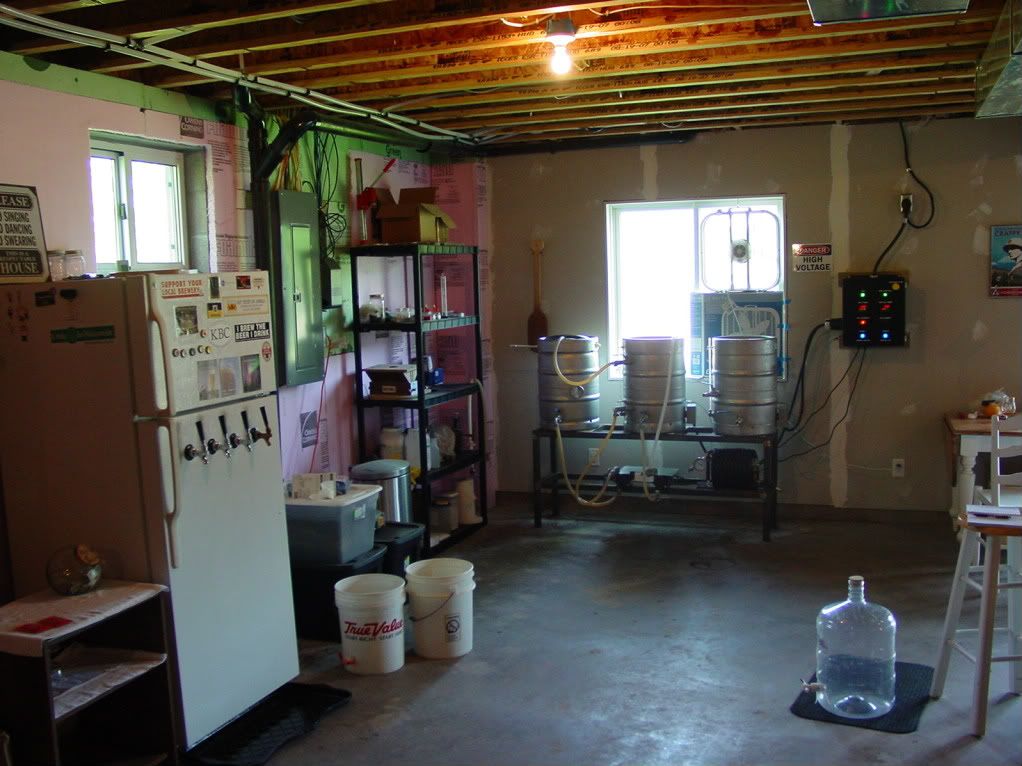
This is the final wiring diagram that represents my control panel:

-------------------------
Update 1.12.2011: Parts list added.
I got a quote for powder coating the stand for $40 (not included in the parts list).
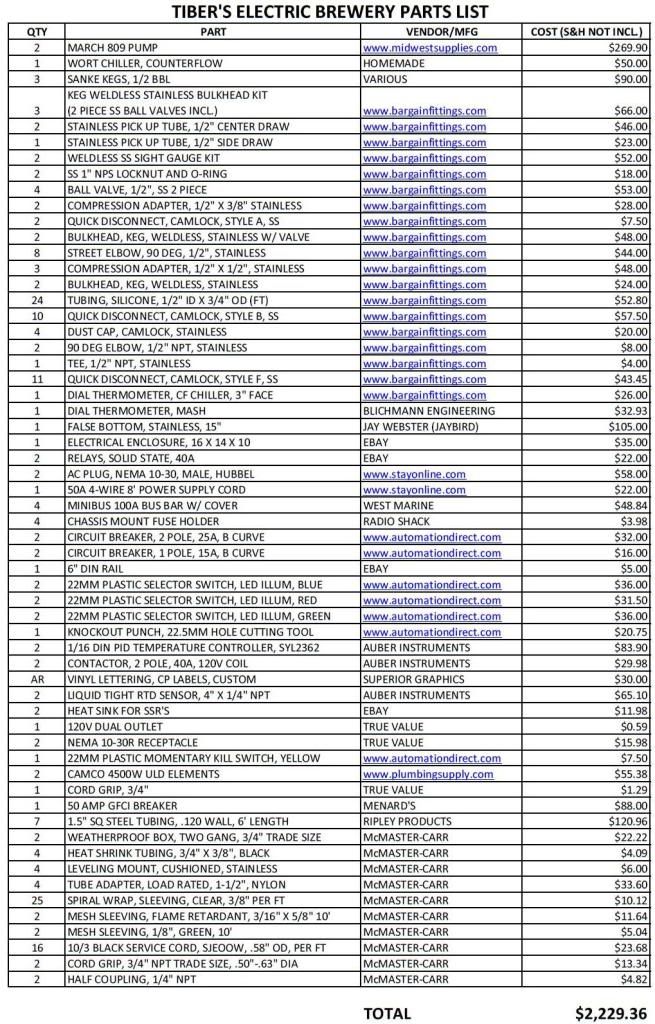
Original post as follows:
I'm planning an electric brewery build, and with many searches, I found a plethora of great information on this site. I am just having some trouble piecing it all together for my application. I'm hoping I could get some direction from those of you who have done this before and/or have the knowledge.
Here's the setup I'm planning:
5-10 gallon batches single tier setup. Igloo cooler mash tun for single infusion and decoction mashing, with eKeggle for HLT (5500W ULD element) and eKeggle for BK (5500W ULD element). It will have two pumps (March 809) and combination hard and soft plumbed on a (hopefully) steel stand. Vorlauf and continuous sparging will be done via pumps, the BK is fed from the MLT via the pumps as well. I'm thinking of keeping the BK to counterflow chiller (link to build with pics) fed via gravity, but I'm open to thoughts on that.
As for the control panel, I want to have a master power on/off switch (emergency pwr), control the temperature of the HLT and BK with PIDs & SSRs, have on/off switches for each of the 5500W elements, and on/off switches for each of the two pumps. I've been told it's a good idea to have an SSR for each leg of the elements, so I would end up with 4 SSRs total. Thoughts on that? I'm thinking of getting this PID from Auber Instruments since I think it will do the job well enough for me. The SSR I've got my eyes on here. For the elements, I'd like to have illuminated push button switches so I visually know when the elements have power available to them. I'd really like to have a button for on, and a separate button for off, but push on/push off buttons are acceptable. For the pumps, I was thinking illuminated selector switches. I've looked at automationdirect.com and found some promising parts (although some are out of stock).
Since the elements will run on 240VAC, and the pumps and PIDs run on 120VAC (not sure what the illuminated switches run on - right from the 120V?), I'm not sure how to distribute and properly ground the power in the control panel. I'm also not sure about how to transmit the power to the kettles, hardware wise. Should the wires going to the kettles plug into the control panel? Or should they be wired more permanently? And how? Are fuses and/or breakers necessary/recommended? Where? How?
I'm anxious to get started, but smart enough to know not to rush into it. I'm looking forward to your help! I will provide pictures as this progresses.
Thanks!
Tiber_Brew
Update: Actual build is as follows: use HERMS setup in converted keg MLT and HLT. 5500W ULD element in HLT, and 4500W ULD element in BK. Will still do decoction mashing with propane burner outside. See wiring diagram below for control panel function.
This is what the finished rig looks like:





This is the final wiring diagram that represents my control panel:

-------------------------
Update 1.12.2011: Parts list added.
I got a quote for powder coating the stand for $40 (not included in the parts list).

Original post as follows:
I'm planning an electric brewery build, and with many searches, I found a plethora of great information on this site. I am just having some trouble piecing it all together for my application. I'm hoping I could get some direction from those of you who have done this before and/or have the knowledge.
Here's the setup I'm planning:
5-10 gallon batches single tier setup. Igloo cooler mash tun for single infusion and decoction mashing, with eKeggle for HLT (5500W ULD element) and eKeggle for BK (5500W ULD element). It will have two pumps (March 809) and combination hard and soft plumbed on a (hopefully) steel stand. Vorlauf and continuous sparging will be done via pumps, the BK is fed from the MLT via the pumps as well. I'm thinking of keeping the BK to counterflow chiller (link to build with pics) fed via gravity, but I'm open to thoughts on that.
As for the control panel, I want to have a master power on/off switch (emergency pwr), control the temperature of the HLT and BK with PIDs & SSRs, have on/off switches for each of the 5500W elements, and on/off switches for each of the two pumps. I've been told it's a good idea to have an SSR for each leg of the elements, so I would end up with 4 SSRs total. Thoughts on that? I'm thinking of getting this PID from Auber Instruments since I think it will do the job well enough for me. The SSR I've got my eyes on here. For the elements, I'd like to have illuminated push button switches so I visually know when the elements have power available to them. I'd really like to have a button for on, and a separate button for off, but push on/push off buttons are acceptable. For the pumps, I was thinking illuminated selector switches. I've looked at automationdirect.com and found some promising parts (although some are out of stock).
Since the elements will run on 240VAC, and the pumps and PIDs run on 120VAC (not sure what the illuminated switches run on - right from the 120V?), I'm not sure how to distribute and properly ground the power in the control panel. I'm also not sure about how to transmit the power to the kettles, hardware wise. Should the wires going to the kettles plug into the control panel? Or should they be wired more permanently? And how? Are fuses and/or breakers necessary/recommended? Where? How?
I'm anxious to get started, but smart enough to know not to rush into it. I'm looking forward to your help! I will provide pictures as this progresses.
Thanks!
Tiber_Brew
Last edited:

























































![Craft A Brew - Safale S-04 Dry Yeast - Fermentis - English Ale Dry Yeast - For English and American Ales and Hard Apple Ciders - Ingredients for Home Brewing - Beer Making Supplies - [1 Pack]](https://m.media-amazon.com/images/I/41fVGNh6JfL._SL500_.jpg)


